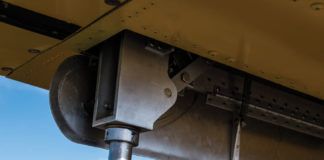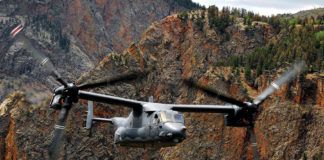Kappa KP-5: conventional excellence.
Like many others in the FAAs list of 48 approved, factory-built Light Sport Aircraft LSAs), this months featured airplane relates to the collapse of the Soviet Union. The Jihlavan KP-5 comes from the Czech Republic, where its half-century-old manufacturer developed ways to replace Soviet bloc products and stay in business. Most of these Eastern European companies turn out beautifully built machines based on elegant designs, and Jihlavan is no exception.
The KP-5 is imported by Kappa Aircraft in Pocono Pines, Pennsylvania, and is sold by the importer and several U.S. dealerships. I flew with Frank Cuba, a flight instructor and pilot examiner who owns Lite Wings, a KP-5 dealership in Silver Creek, Nebraska.
The Airplane
The cockpit is thus narrower than it could be with conventional side-by-side seating, at least theoretically reducing weight, cost and drag. Both seats are adjustable fore and aft , and both are provided full dual controls including pitch trim and push-to-talk buttons on the sticks. Only the center-mounted throttle is shared.
The other unusual feature is Fowler flaps, which increase wing size by about the area of the flaps as they move down and far aft to the full 35 deployed position. Found on most airliners and many fast airplanes, Fowler flaps are mounted on machined tracks. They greatly increase lift and drag on the KP-5, as will be noted shortly.
Pushrod controls except for rudder cables are common in LSAs, and their use in the KP-5 results in smooth, low-friction aileron and elevator inputs. Aileron differential is 2:1; they move up twice as far as they move down, considerably reducing adverse yaw. The wing design uses the well-known GA(W)-1 airfoil at the root tapering to the GA(W)-2 configuration at the tip. The wings are twisted slightly, resulting in washout that discourages tip stalls that could result in loss of aileron effectiveness at low airspeed.
Power comes from a 100-horsepower Rotax 912 ULS and goes to a three-blade, Woodcomp SR200 propeller. The wing center section accommodates two 8.5-gallon, individually selected fuel tanks, and a pair of optional 4-gallon tanks bring total fuel to 25 gallons, calculated to be enough for 630 miles or 5 hours without reserves (dont do it!). Call it 4 hours endurance to be safe.
Reflecting a design created before the LSA 1320-pound maximum gross weight was finalized, KP-5s maximum is listed as 1278 pounds, and empty weight is 695 pounds not including extras. Resulting useful load is 583 pounds. With the standard tanks full, that leaves 484 pounds for a combination of people and up to 66 pounds of baggage in two compartments.
All three gear legs are fitted with rubber donut shock absorbers. Rudder pedals steer the nosewheel, and each stick is fitted with a bicycle-type handle for non-differential wheel raking.
The upward-hinged canopy is acrylic, and the frame combines fiberglass, Kevlar and carbon fiber. It may be secured from either seat. In addition to a pair of fuselage cabin air vents, the canopy provides adjustable air for both fliers. Canopy vents like this-originally found on European sailplanes-are now common on light airplanes. The large canopy dips low on the sides and provides outstanding visibility, especially from the left seat. Both seats are fitted with four-point safety harnesses. Standard instruments are the regular round variety, but this KP-5 was equipped with the optional Dynon EFIS-D100 7-inch-diagonal flat panel display.
And So We Go Flying
Takeoff and climb into gusty afternoon conditions revealed excellent handing in roll and pitch: Response to gusts was crisp without being twitchy or overly sensitive. Differential ailerons reduce necessary coordinating rudder input. Once at cruise airspeed, little rudder was needed when rolling smartly into and out of banks; the ball-once I found it-stayed close to centered with little footwork.
At this point Ill digress to recommend something I did not do: Get acquainted with the Dynon D100 before relying on it for basic flight information. Airspeed, altitude and heading were found on the Dynon panel immediately, but I had to glance at the EFIS several times before locating the electronic-image version of the standard ball-in-the-tube slip/skid indicator.
Continued gustiness precluded the exact numbers and experiences I usually seek, but here are the basics: Roll rate was about 3 seconds from 45 to 45 of bank. A departure (partial power) stall was at 43 mph indicated (it varies with the amount of power carried) with a slight wingdrop, and recovery was perfectly comfortable. Approach (idle power) stalls were docile with or without flaps, and recovery was immediate upon relaxing back pressure.
The electrically powered Fowler flaps are selectable for 10-the normal approach setting-or ull down at 35. The 10 position results in a comfortable idle-power glide approximating the normal 3 airport glide slope. By comparison, the full-down mode is something to behold (preferably at altitude the first few times). At idle power, the pitch down to maintain normal approach airspeed appears to be 12 or more, about four times the normal glide angle. This flap setting would be useful getting into short runways with obstructions or for keeping the pattern tight once you’ve mastered touchdown in this mode. Cuba said he considers full flaps to be primarily for emergencies or when showing off .
Advertised full-power level airspeed is 138 mph, but the most seen on our airspeed indicator was 127 mph (130 TAS) in the bumpy air. General gustiness precluded relying on GPS ground speed to confirm airspeed. In his review of the KP-5 several years ago, Dan Johnson noted its tendency to climb when attempting straight and level flight because of the downward sloping cowl. I noted the same thing, but with a bit more time, improper pilot response to better-than-usual forward visibility would disappear. Overall, I was delighted with how the KP-5 flies and with cockpit visibility.
Among the many lightplanes Ive flown, the all-wood, Italian-design F.8L Falco is among the best from a handling standpoint, and the Kappa KP-5 resembles it. Cuba says the KP-5 comes closest to flying like a Vans Aircraft RV, and I also see the similarity. Both impressions indicate how well the KP-5 flies.
Buying One
Purchase of the KP-5 includes a reasonable-length checkout (not primary training). In addition to Pennsylvania and Nebraska, California and Texas are KP-5 dealer locations. The airframe is warranted for two years or 200 hours, and the Rotax engine carries an 18- month or 200-hour warranty.
As always, long-term product support is a concern, but the KP-5s obvious quality and excellent handling should provide enough sales to maintain a Kappa Aircraft presence for the long haul.
______________________________________________________________________
For more information, call 570/839-6450 or visit www.kappaaircraft .com. A direct link can be found at www.kitplanes.com.













